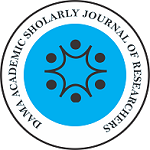Author: Lukas Lu Walangara
Lukas_luwalangara@yahoo.com
Masters Student, Public Health Science,
Faculty of Public Health, Airlangga University, Indonesia
(031) 5920948
Abstract
Labor complications, especially bleeding, are still the cause of maternal mortality in Indonesia, including in East Sumba. Early detection of such risks is necessary to predict the likelihood of complications during labor so that labor is well planned, and quick and precise decisions can be made when complications occur (Health Ministry, 2009). The purpose of the study is to determine the factors associated with labor complications. This research is a descriptive survey research with case control design conducted in Lindi Mara Christian Hospital. The samples included in the research were 58 consisting of 29 case samples and 29 control samples. The findings showed that 71.4% of subjects had anemia, 58.6% were in the 20-35 age group and 55.2% were in the no-risk parity group. The result of bivariate analysis showed that anemia status was correlated with labor complication with p = 0,001, and OR = 10,969, which means that the risk for maternal complication among mothers with anemia is 10.96 times greater than non-anemic mothers. Parity was associated with complications of labor with values of p = 0.002, and OR = 5.971, which means the risk for having maternal complications in a mother with risky parity is 5.97 times greater than for those with no-risk parity. Factors associated with maternal complications are anemia and parity whereas age does not have a correlation. A more frequent pregnancy check is very important for a mother to detect the risk of complications during labor.
Keywords: Risk factors, anemia, age, parity and complications of labor.

